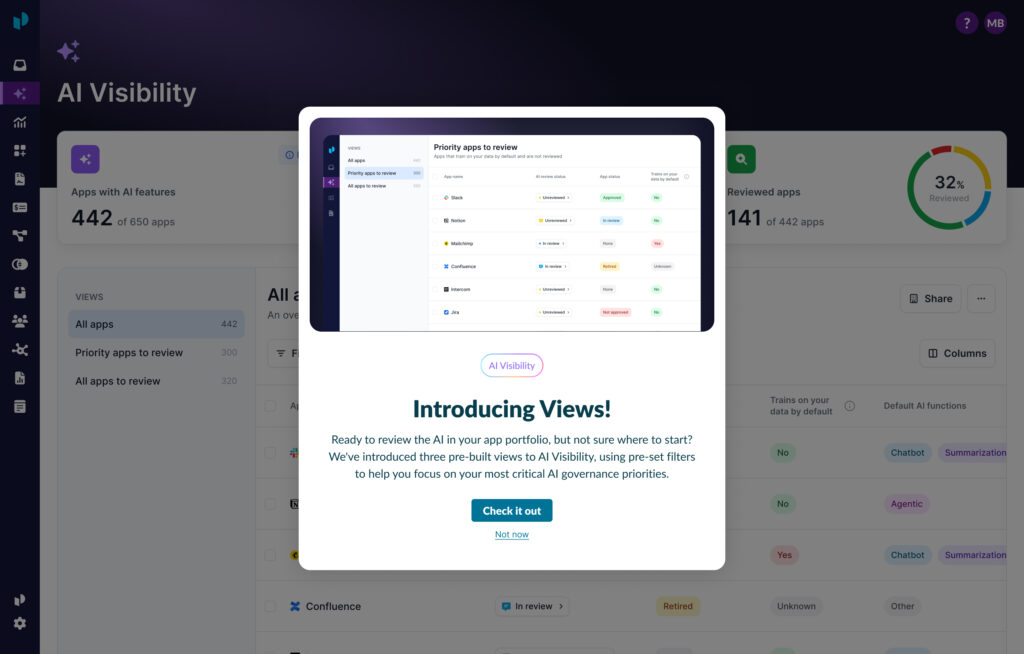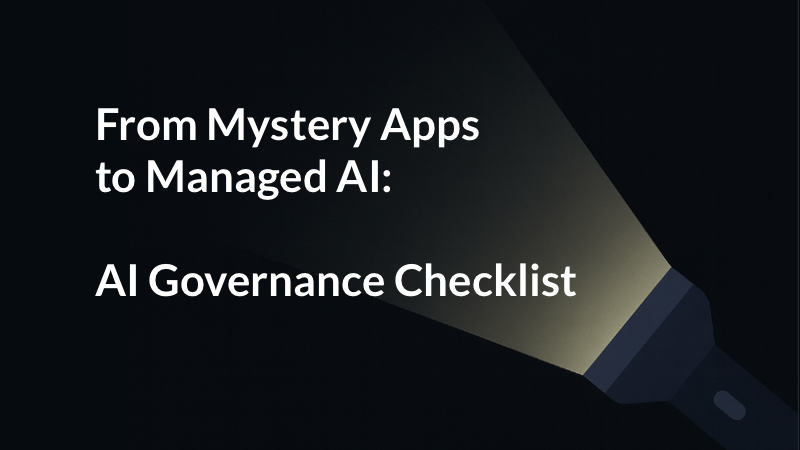
Winter is coming: 8 tips for end of year procurement readiness
Winter is coming. It may have already arrived for some. And that means it is time for end of year madness. While we all know it is coming, few of us have the bandwidth and resources to properly plan for the influx of requests, the surprise renewals, and the quicker than possible turn time expectations. Just the thought of it all can be enough to scare you right into hibernation. But if you start taking action today – identify what you know, gain alignment and set expectations – your ability to execute your company’s needs and navigate through the winter storms will impress. Let’s get shaking!
One principle that has helped me not only during the end of year but throughout the year is to try my best to not say “No”.
“No” is the enemy of Procurement. When someone comes to you with an unreasonable request, instead of saying “No” tell them what they need to do to create a “Yes”, or even a “We can discuss further if…”. This will further strengthen the trust your stakeholders have in you as a strategic business partner. Particularly in these crunch times, if your stakeholders know you will work with them, not against them, they will be better partners to you in the future
1. Get your house in order
You can’t prepare for things you are unaware of. Getting our contracts in one place and documenting our metadata is a cumbersome and time consuming task – and it’s time to get to work! I know it’s easy to put this exercise off, but the longer we wait the harder it will be.
I’ve found the most reliable path to preparing for end of year renewals is leveraging intake-to-procure and SaaS management platforms. These platforms act as your single source of truth for what is coming up and what needs to be actioned by when and by whom
If you do not have a platform to manage your contracts or spend, hopefully you’ve been tracking them somewhere: a repository like shared drive or a CLM. No? No problem. Here’s where to start:
- No repository? Leverage that dreadful spreadsheet you have been manually updating
- No spreadsheet? Get a list of all owned tools from your IT partners and match it against your ERP
- Discrepancies? Work with IT to understand who is using what tools and meet with the business owners. Start tracking this information in a spreadsheet alongside IT and finance (FP&A is who I’d speak with first!)
2. Identify what you have, and what you need
Now that you have known contracts in one place, it’s time to identify what you have — and what you don’t. The focus here is validation, understanding, and alignment.
- Validate your data by comparing supplier usage to internal usage reports
- Understand user sentiment by doing a quick poll with your stakeholders (bonus points for conducting surveys and QBRs throughout the year). Doing this consistently will lighten that end of year lift.
- Align on renewal needs with the business owner, department head, and FP&A. Ask a few questions – these can be asked via surveys and polls as well, get creative!
- Are we renewing this tool/service?
- Are we increasing the licenses (or data, service level, etc)? Decreasing? Staying exactly the same?
- Do we anticipate any added costs?
- Have you audited and validated usage and are prepared to increase or reduce as needed?
- Are you satisfied with the tool or service? Why or why not?
- Have you considered any other tools?
3. Align on expected costs and budget
This is a critical part of all purchases. Especially during busy times as unexpected costs or surprise increases can cause lengthy delays that result in missed deadlines and missed discount opportunities.
- Do your best to estimate renewal costs
- Build in uplift charges
- Include additional license/usage increases
- Work with FP&A to ensure budget exists for each renewal
- Where budget does not exist, game plan with your business owners on negotiation strategy and reconfirm and realign on needs vs wants as necessary
- Keep FP&A and all cost approvers well informed along the way, surprises cause delay
4. Negotiate as early as possible
Getting ahead on your deals will give you more flexibility for those surprises. Don’t wait to take action because it isn’t hectic today. It will be, and soon! Get your deals inflight now to avoid bottlenecks and roadblocks.
- Give yourself more time than you think
- Proactively contact suppliers for renewal quotes
- Alert legal and infosec anticipated reviews, align on turn times and communicate proactively and openly with your stakeholders and business owners
- Do not expect for your suppliers to meet all of your needs, Suppliers are not always willing or able to provide discounts, extend one-time offerings, or work with you on your timeline
- Have a game plan
- Know your anchors
- Use your leverage
- Be clear on what ‘makes great’
- If your suppliers do not understand what their – and your – success is measured on, they will not be able to deliver
- In turn, understand how your supplier is measured from their end and find wins for them. It is critical to be a good customer and good partner
- Finally, hold both parties accountable
5. Treat your stakeholders as partners
This is an awesome opportunity to lead by example and to create a foundation of trust with your stakeholders. Be transparent around process and policy and keep your stakeholders well informed. The more you treat your stakeholders as partners, the more they will do the same.
- Ensure your stakeholders know
- What action is needed on their end
- When the action is needed to take place
- What has happened, what is currently happening, what happens next
- Bring them along, keep them apprised of the wins and challenges of their deals and leverage them, when it will serve the deal, for supplier communications and influence
- Place ownership of tasks and steps squarely on the stakeholders shoulders
- Push-pull: What can you do to make their lives easier while maintaining governance?
- Wave a standard POC? Wave a standard procurement review or negotiation?
- Maintain legal and infosec reviews? Ensure engineering & architecture are looped in early enough to do what is needed?
6. Proactively alert leadership to their tasks and required actions
Leaderships’ time and attention is overwhelmed during the end of year. Not only are they working to close out the current year, they are actively planning for the next year. Ensure you get what you need when you need it by setting proper expectations on your needs with leadership. As much as you can, provide the what, when, why, and how.
- Make this easy! If you do not have a platform to help automate communications and tasks, be clear and concise with your asks to remove ambiguity
- Request bulk action rather than one at a time to maximize the attention of leadership and optimize their time spent on these tasks
7. Set net new request expectations
Renewals will take up a large part of your time at the end of year, but that doesn’t mean new requests won’t be needed. In order to optimize your stakeholder experience, be upfront and open about net new requests. Will the timelines be extended? Will there be different thresholds? Whatever the process and timelines will be, get that message out to the organization to avoid whiplash.
- Openly share what the renewal volume looks like and provide clear guidance on what can be done for net new requests and confirm expected turnaround times
- Work with your stakeholders to understand what is truly urgent vs what can wait until next year
- Ensure your fellow business partners, legal & infosec for example, have the bandwidth for net new requests
8. Set thresholds and risk tolerance
Not all purchases are created equal. And for many organizations certain purchases might fall under different policies or follow different processes. If your organization has thresholds and risk tolerances that alleviate review or approval lifts and allow more self-service, get those set up and communicated now.
- Outside of software agreements, what dollar amount can we allow stakeholders to completely self-serve through boilerplate agreements?
- Without redlining as an option, can we allow events up to $75k to use our papers? Or services up to $50k to use our papers?
Now is the time to collaborate with business leaders and business partners to determine what risk is the business willing to assume. Are we willing to accept the risk of a $25k event contract without review? Are we willing to allow independent contractors to use their papers as long as they pass our infosec review? Align on these thresholds as a team.
To wrap up, 5 key highlights to take away:
- Start as early as you can on what you know to give yourself more space when those unknowns pop up.
- Set expectations and never stop communicating.
- Bring your stakeholders, business partners, and leadership team along for the ride.
- You have to make deposits before you can withdraw – give your stakeholders more than you take.
- Collaborate and consult. While many of us in Procurement love to have control, being controlling gets us nowhere.
About Productiv:
Productiv is the only SaaS Management Platform built for bringing teams together. From new purchase requests to renewals, and everything in between, Procurement, Finance, and IT work in Productiv to align around trusted data, get AI powered insights, collaborate, make smarter decisions, and have confidence in every investment, at scale.
Learn more today.
About Productiv:
Productiv is the IT operating system to manage your entire SaaS and AI ecosystem. It centralizes visibility into your tech stack, so CIOs and IT leaders can confidently set strategy, optimize renewals, and empower employees.





